Did ‘Daf Yomi’ Make Me a Better Jew?
What I took as a literary critic from the rich humanist landscape of page-a-day Talmud study. And a farewell.
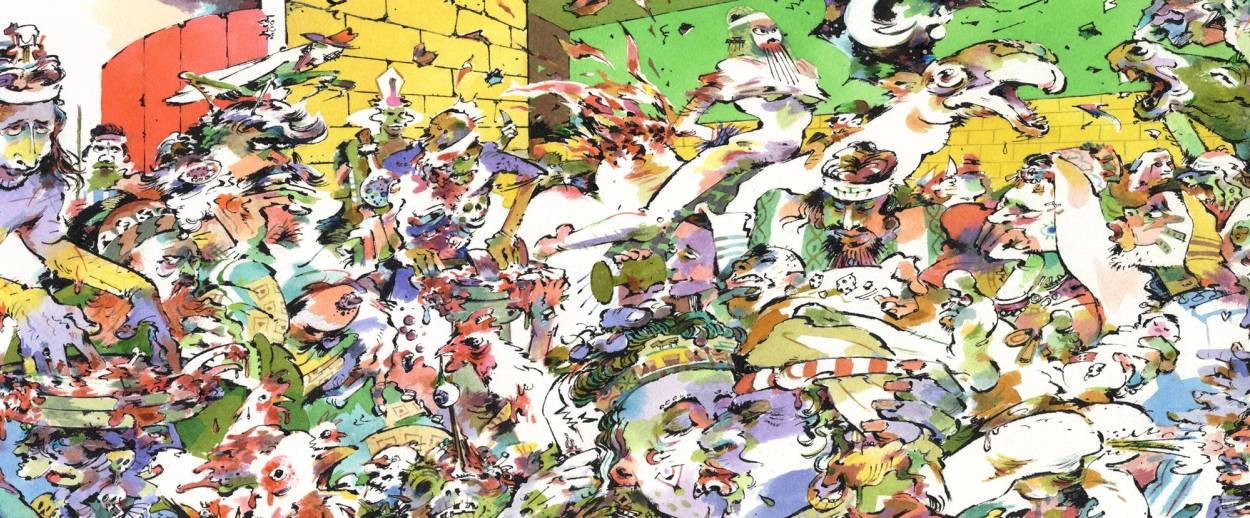
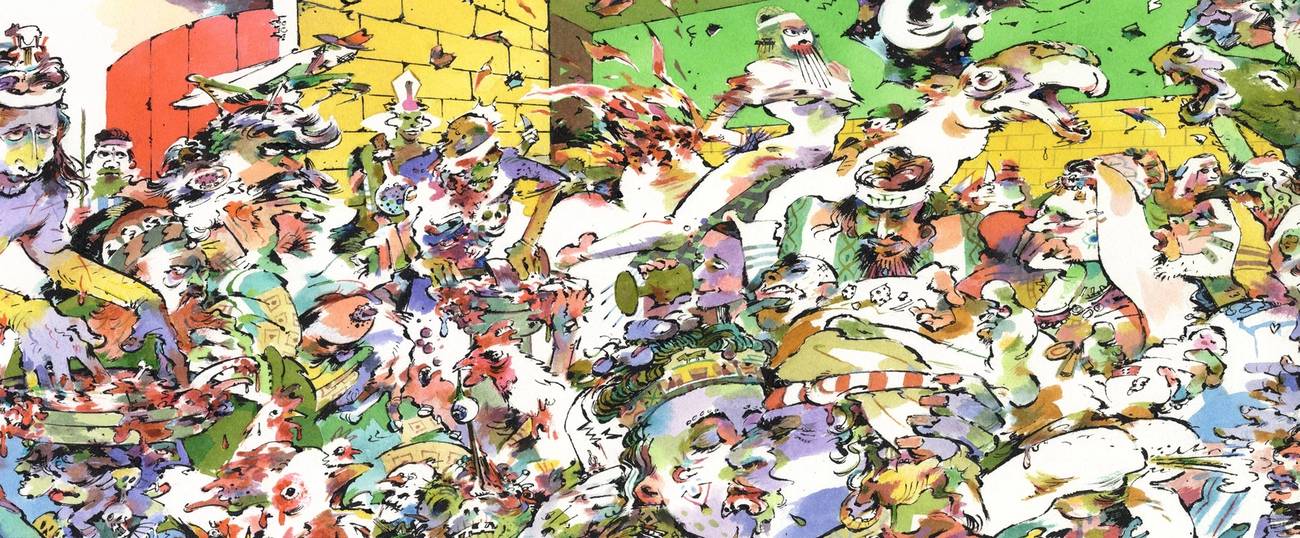


For the past seven and a half years, literary critic Adam Kirsch read a page of Talmud a day, along with Jews around the world.
“The school of Elijah taught: Anyone who studies Halachot every day is guaranteed that he is destined for the World to Come.” On Saturday, with this highly appropriate sentiment, Daf Yomi readers came to the end of our seven-and-a-half year journey through the Babylonian Talmud. I imagine that Rabbi Meir Shapiro, of Lublin, Poland, must have had this sentence in mind when he created Daf Yomi in 1923. By offering Jewish laymen a program for studying one page of Talmud every day, Shapiro managed to reconcile the study of Halacha, the classic Jewish devotional act, with the modern, democratic spirit that penetrated the lives of even the most traditional of 20th-century Jews. (When he began the first cycle of Daf Yomi, Shapiro himself was a democratically elected member of the Polish parliament, sitting as a deputy for Agudath Israel, the ultra-Orthodox party.)
This combination of modernity and tradition was on striking display at the Siyum HaShas, the great celebration of the completion of the Daf Yomi cycle that I attended at New Jersey’s MetLife Stadium on New Year’s Day. Reading about the last Siyum, in 2012, was what inspired me to begin my Daf Yomi study, and throughout the whole seven-plus years I looked forward to being present at this year’s event. It didn’t disappoint: Where the Jets and the Giants usually play, 90,000 ultra-Orthodox Jews gathered to pray, sing, dance, and affirm their belief that studying Torah is the pathway to the World to Come.
The choice of venue was an almost self-conscious illustration of the words of the Hadran, the prayer that pious Talmud students say when they complete a tractate. The Hadran draws a pointed distinction between Jews who are blessed to study Talmud and those idlers “who sit on street corners”: “We run, and they run: We run towards eternal life, and they run to a pit of desolation.” Just so, at MetLife Stadium, instead of cheering for running backs, the crowd applauded roshei yeshiva, the heads of Torah academies who gave speeches, as well as the ba’alei batim, the ordinary “householders” who had set aside so many hours to study Talmud.
I was in the stands when those who were making a siyum were invited to stand and recite the Hadran, but in the end I decided not to join in. Partly this was because the Hasidim among whom I was sitting would have thought it very unusual for me, a conspicuously secular Jew, to draw attention to myself by saying the prayer. Partly it was because I knew that the way I did Daf Yomi was very different from the way most of the people there had done it: in English translation, not in the original Hebrew and Aramaic; alone, not with a teacher or study group; not truly every day, but usually reviewing the week’s pages on the weekend; and, of course, with the aim of writing about each week’s study for Tablet.
But most of all, I felt that I should finish the Daf Yomi cycle in the spirit in which I had approached it from the beginning, which was not the spirit of a believer. Throughout these 288 columns, I have tried to write about the Talmud with respect for what it has historically meant for Jews and Judaism, and what it still means for religious Jews today. I felt this was especially important because among most Jews like me—I was raised in a Conservative synagogue and I’m now mostly nonobservant—the Talmud is usually discussed with little firsthand knowledge and even less reverence.
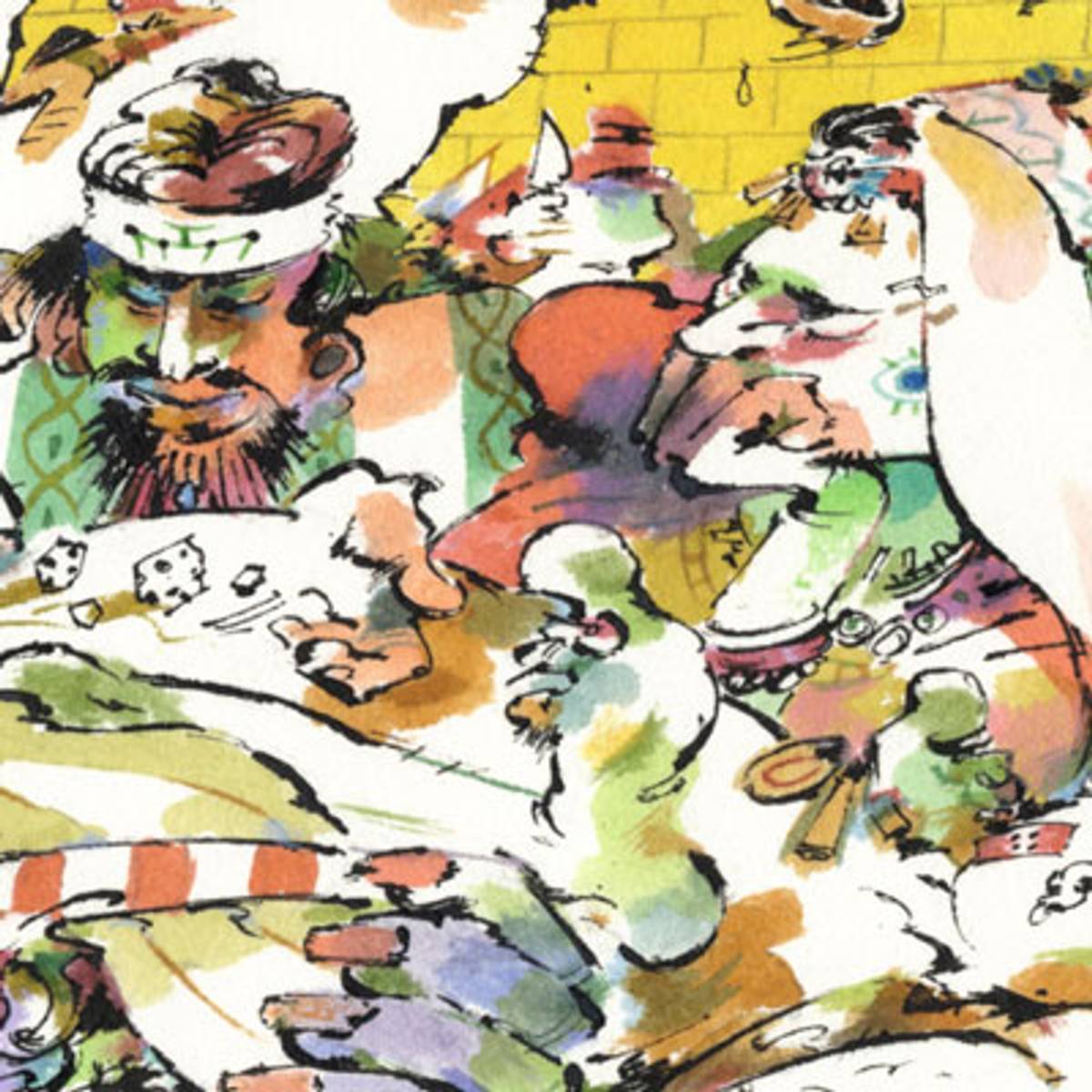
One reason for this is that Jews who don’t know the Talmud take their ideas of it from Western culture, which reflects Christianity’s view of the Talmud rather than Judaism’s. After all, when the Apostle Paul said, in II Corinthians, that “the letter killeth but the spirit giveth life,” it was Halacha that he had in mind. Ever since—and for secular, “enlightened” Western thinkers as well as religious ones—the Talmud has been synonymous with arid legalism. In English, the word “talmudic” connotes perverse overanalysis. This is one of the main reasons why I wanted to do Daf Yomi—so that I could understand how Jews themselves thought about their law, rather than how others defined it for them.
I’ve often been asked whether Talmud study has made me a better Jew, which usually means a more devout and observant Jew. For most of the people at MetLife Stadium, that is the reason to study Talmud—because it inspires goodness and earns spiritual merit. For better or worse, this was not the case for me. I finish Daf Yomi as I began it, as a secular Jew who is quite content not to live according to Halacha. The Talmud is full of ideas and values that I’m glad I don’t have to accept or rationalize, and over the last seven and a half years I have written about a number of them—from the rabbis’ incorrect understanding of biology and cosmology, to their superstitions about demons and magic, to their patriarchal assumptions about the spiritual and legal primacy of men over women.
Can a Judaism cut off from its roots in the Talmud keep thriving for long?
Usually I didn’t feel it necessary to dwell on my own objections to these things, because they didn’t surprise me: They are exactly what you would expect to find in a text written some 1,500 years ago. The rabbis’ pagan, Christian, or Zoroastrian neighbors would have felt very much the same way on these subjects. The gift of the Enlightenment was to make it possible for modern people of every faith to bring such inherited beliefs before the bar of reason and decide whether they were really true and just. In a way, this was a gift to religion as well. Free from the authority of the Talmud—or at least, free to pick and choose among its teachings—Reform, Conservative, and Reconstructionist Jews were able to recreate Judaism according to their own deeply held moral and spiritual beliefs.
The still unanswered question is whether a Judaism cut off from its roots in the Talmud can keep thriving for long. Much has been written about how the future of American Judaism is Orthodox, an idea that would have greatly surprised the American Jews of the mid-20th century. Demographically, this is because non-Orthodox Jews are assimilating, intermarrying, and having few children, while Orthodox Jews are doing the opposite.
But that demographic reality rests on a deeper spiritual reality, which is that Orthodox Judaism offers something other denominations do not—and that offer has everything to do with the Talmud. Traditional Judaism insists that the rigors of living according to Halacha are justified because they bring the Jew into contact with God. Indeed, the rigors help to convince the believer that he is following God, since why else would he take so many pains and sacrifice so much freedom?
Believers know that Halacha is God’s will because they accept that the Oral Law, which is recorded in the Mishna and analyzed in the Gemara, descends to us in an unbroken chain from Moses, who received it from God. As the first words in Pirkei Avot have it: “Moses received the Torah at Sinai and transmitted it to Joshua, Joshua to the elders, and the elders to the prophets, and the prophets to the Men of the Great Assembly. They said three things: Be patient in justice, raise many disciples and make a fence around the Torah.”
The idea of making a fence around the Torah—that is, interpreting and expanding its laws in order to make it harder to violate them—is the basis of many of the Talmud’s legal innovations. At the heart of the Talmud, I have come to understand, is the rabbis’ belief that the Torah—the Written Law, the Five Books of Moses—is at the same time absolutely sacred and completely inadequate. The only way to live by the Torah is to expand on it, often in ways that Moses himself would not have understood. That is the moral of the famous story in Menachot 29b, where God grants Moses a vision of the academy of Rabbi Akiba, centuries after his own death. Moses is utterly baffled by the legal discussion—until he hears Akiba say that a certain law was received by Moses at Sinai, whereupon he “felt relieved.” Somehow, the Talmud is continuous with Sinai even when it departs farthest from Sinai.
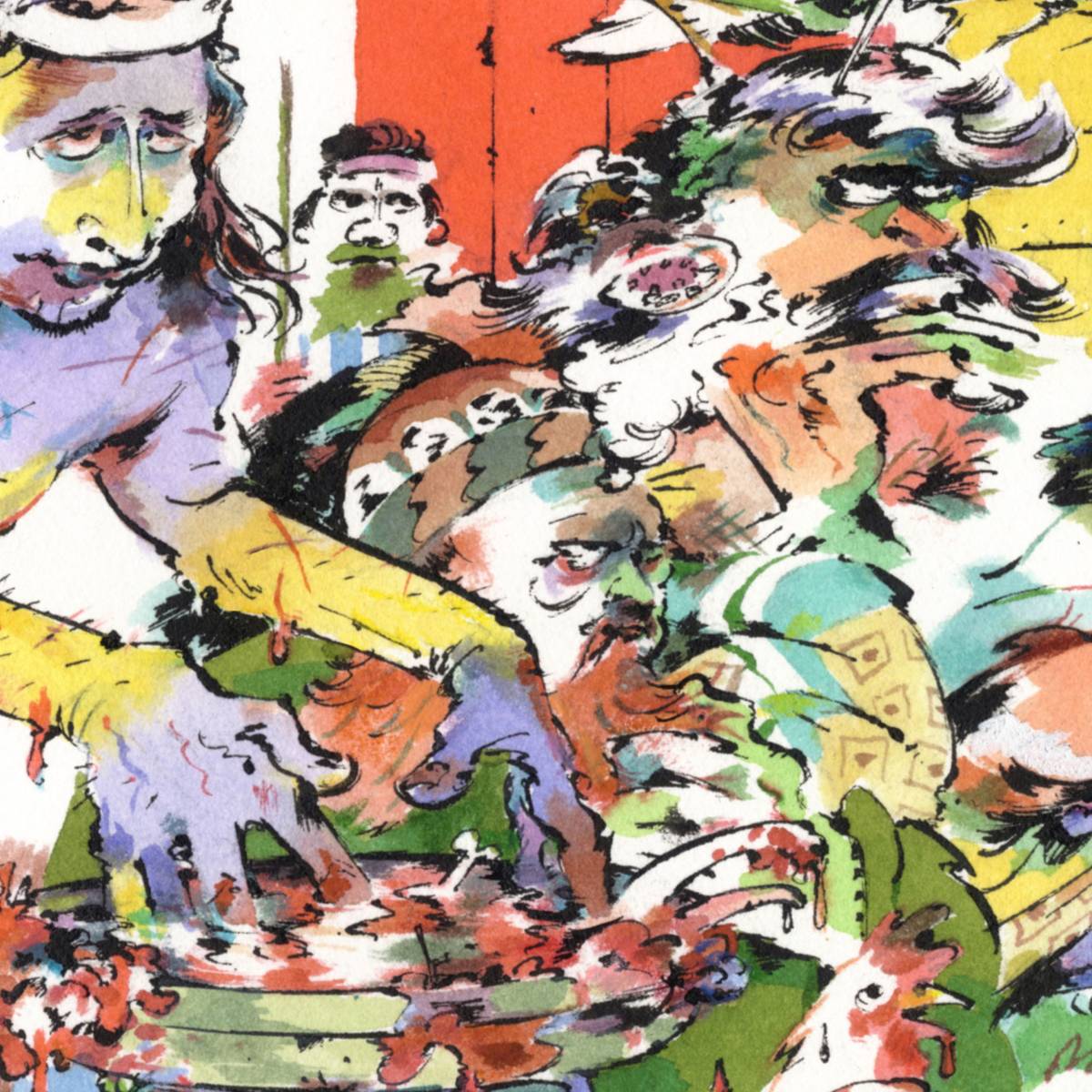
Often the problem is that the Torah gives orders but doesn’t explain how to carry them out. “The seventh day is a sabbath of the Lord your God; you shall not do any work,” Moses says in Deuteronomy. But what constitutes work? To answer that basic question requires the long Tractate Shabbat, which introduces concepts that are nowhere in the Torah, such as public and private domains, “set-aside” objects that cannot be touched on Shabbat, and the 39 categories of forbidden labor, modeled on the types of work required to build the Tabernacle.
Another impetus for Talmudic innovation is the great difference in lifestyle between the Israelites who received the Torah, who were nomadic sheepherders in a tribal society, and the Jews of Babylonia who composed the Gemara, who were landowners and merchants in an urban, multicultural society. Some of these were practical differences, but the most important ones had to do with the evolution of the Jewish moral sense. Though the rabbis never say so explicitly, it’s obvious that they found many of the Torah’s laws as difficult to understand as some of today’s Jews find the laws of the Talmud. After all, as many years separate Abaye and Rava, who lived in the third century CE, from Moses, who notionally lived in the 14th century BCE, as separate us from Abaye and Rava.
Again and again, the rabbis interpret the Torah’s commandments in ways that soften and humanize them, elevating mercy and reason over strict punishment. While the idea that Judaism is a religion of “Old Testament” justice while Christianity prizes mercy is everywhere in our culture—just look at The Merchant of Venice—this binary cannot survive an acquaintance with the Talmud.
Over the last seven and a half years, I have written about many examples of this humane process. For instance, the rabbis redefine “an eye for an eye, a tooth for a tooth” to mean its exact opposite—that a physical injury should be compensated by the payment of money damages, not by reciprocal injury. They abolish the biblical rite of the sotah, in which a wife accused of adultery is made to drink a potion that is supposed to cause her stomach to burst open if she is guilty. They place such impossible conditions on the killing of a rebellious son—including the requirement that his parents be physically identical, a pair of virtual twins—that they conclude no such killing has ever taken place. They decide that a person cannot be found guilty of a crime unless he is warned in advance by two witnesses who tell him the exact punishment for the deed he is about to commit. No wonder that, in Tractate Sanhedrin, the rabbis say that a Jewish court that imposes the death penalty once in 70 years is considered bloodthirsty.
The strictness of talmudic law appears, not in its attitude toward ordinary crimes and punishments, but in its careful choreography of everyday life. Joseph Soloveitchik, the famous “Rav” of modern Orthodoxy, extolled this talmudic rigor in his book Halakhic Man. “When halakhic man approaches reality, he comes with his Torah, given to him from Sinai, in hand,” Soloveitchik writes. “He orients himself to the world by means of fixed statutes and firm principles.”
Studying Talmud, I have learned that this orientation is indeed total. One would expect the rabbis to have precise rules for ritual and religious actions, and they do—how to splash the blood of a slaughtered sheep on the corners of the altar, how to build a sukkah, how to write a Torah scroll. But they also tell us how we should tie our shoes in the morning (first put on the right shoe, then the left, then tie the left shoe and finally tie the right one) and how often married men should have sex with their wives (twice a week for donkey drivers, while scholars preoccupied with Torah can make do with once a month). They lay down rules for business—buying real estate, loaning money, appointing an agent—and for a healthy diet—what foods are good for people with various illnesses and how to behave at the table (you should never pass a cup over a loaf of bread).
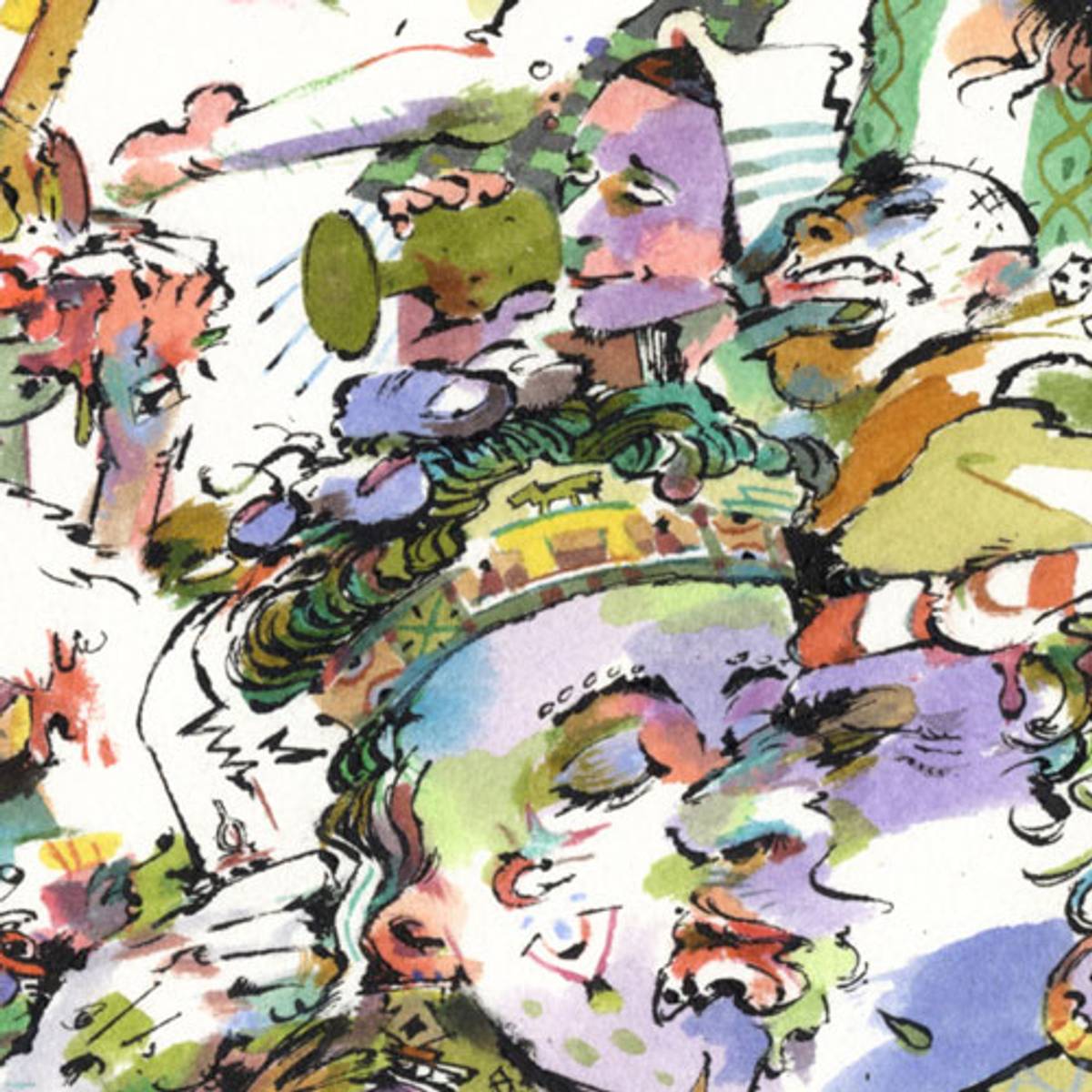
But the ideal Jewish life, for the rabbis, involves more than obeying God’s law at every moment. Above all it means studying that law; and understanding the Talmud requires cultivating many intellectual faculties that we don’t ordinarily associate with religious piety. The law of eruvs involves geometry; sacrificing pairs of birds involves probability theory; figuring out the rules for levirate marriage involves abstract logic puzzles of the kind you find in the LSAT; menstruation and childbirth require a grasp of biology; the sacrifice of animals rests on knowledge of anatomy; determining the dates of holidays and the beginning of a new month means using astronomy. None of these subjects are treated in the Talmud in a systematic or wholly accurate way, but one thing I took from Daf Yomi was a sense of how Talmud study sharpened the intellects of many generations of Jewish students.
The modern Jewish world was born when most of those students began to feel, in the late 18th and early 19th centuries, that Talmud study was no longer a stimulus to intellectual creativity but a constriction and a waste. Solomon Maimon, born in Lithuania in 1753, was an illui or child prodigy who came to see the Talmud as a symbol of everything that was wrong with the Jewish life that surrounded him—its backwardness, superstition, refusal to adapt or improve. He left his home and family to move to Berlin, where he applied his gifts to secular philosophy and earned the admiration of Immanuel Kant.
Maimon shared the view that Isaac D’Israeli, an English man of letters (and the father of prime minister Benjamin Disraeli), expressed in his 1833 book, The Genius of Judaism, where he describes the Talmud as “a system of barbarous learning,” “a mass of ritual ordinances, casuistical glosses, and arbitrary decisions.” “I would implore the Jews,” D’Israeli wrote, “to begin to educate their youth as the youth of Europe, and not of Palestine; let their Talmud be removed to an elevated shelf, to be consulted as a curiosity of antiquity, and not as a manual of education.”
That is exactly what most Jews did when they came to America. The hero of Abraham Cahan’s 1917 novel, The Rise of David Levinsky, begins life as a Talmud student in Eastern Europe, but he quickly forgets his learning once he moves to America, where there is no call for it—any more than there is for his sidelocks, which he gets cut off on his first day in New York. David becomes a successful garment manufacturer, but he secretly wishes he could have become an educated man—not educated in Talmud, the way his ancestors were, but in some secular field like medicine. Whenever he passes City College, David “felt like a convert Jew passing a synagogue.”
In this way, Cahan suggests that American Jews translated the ancient Jewish reverence for intellectual study into a secular context. This talmudic inheritance surely helps to explain why modern Jews have made such disproportionate contributions in fields like math, science, literature, and education. For myself, Daf Yomi has reinforced my sense that what I do as a literary critic is in some sense a legacy of the traditional Jewish love of reading and analyzing texts, though in a wholly different form.
I’ve come to understand my Daf Yomi columns in this spirit, as a kind of travel writing: I am revisiting the intellectual homeland of my ancestors in order to gain a better understanding of them and of myself. I don’t intend to move there permanently, and I recognize that a tourist sees things only superficially and often incorrectly. But after all, Ashkenazi Jews seldom go sightseeing in our physical “old country,” the way Italian or Irish Americans do, because there is nothing left to see.
That is all the more reason why non-Orthodox and even nonbelieving Jews should learn about our textual homeland, which is still thriving with Jewish life, as I saw at MetLife stadium last week. This is possible today as never before, thanks to magnificent tools like the English-language Koren Talmud and the multitude of online Daf Yomi resources. With their help, 21st-century readers are able to fulfill the promise of the ancient Hadran prayer: “We will return to you, Talmud Bavli, and you will return to us; our mind is on you and your mind is on us; we will not forget you and you will not forget us—not in this world and not in the next world.”
***
Adam Kirsch embarked on the Daf Yomi cycle of daily Talmud study in August 2012. To read the complete archive, click here.
Adam Kirsch is a poet and literary critic, whose books include The People and the Books: 18 Classics of Jewish Literature.